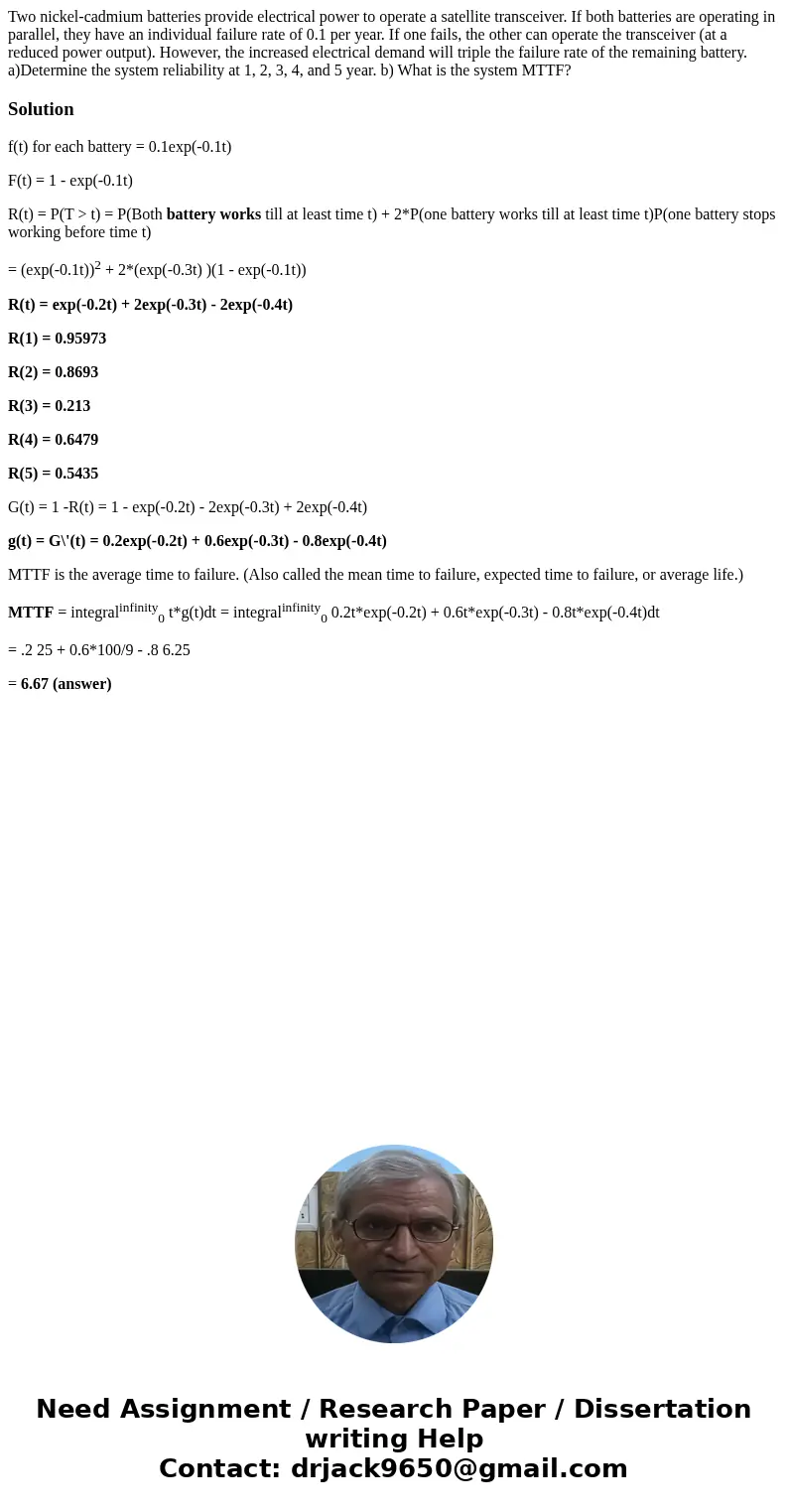Two nickelcadmium batteries provide electrical power to oper
Two nickel-cadmium batteries provide electrical power to operate a satellite transceiver. If both batteries are operating in parallel, they have an individual failure rate of 0.1 per year. If one fails, the other can operate the transceiver (at a reduced power output). However, the increased electrical demand will triple the failure rate of the remaining battery. a)Determine the system reliability at 1, 2, 3, 4, and 5 year. b) What is the system MTTF?
Solution
f(t) for each battery = 0.1exp(-0.1t)
F(t) = 1 - exp(-0.1t)
R(t) = P(T > t) = P(Both battery works till at least time t) + 2*P(one battery works till at least time t)P(one battery stops working before time t)
= (exp(-0.1t))2 + 2*(exp(-0.3t) )(1 - exp(-0.1t))
R(t) = exp(-0.2t) + 2exp(-0.3t) - 2exp(-0.4t)
R(1) = 0.95973
R(2) = 0.8693
R(3) = 0.213
R(4) = 0.6479
R(5) = 0.5435
G(t) = 1 -R(t) = 1 - exp(-0.2t) - 2exp(-0.3t) + 2exp(-0.4t)
g(t) = G\'(t) = 0.2exp(-0.2t) + 0.6exp(-0.3t) - 0.8exp(-0.4t)
MTTF is the average time to failure. (Also called the mean time to failure, expected time to failure, or average life.)
MTTF = integralinfinity0 t*g(t)dt = integralinfinity0 0.2t*exp(-0.2t) + 0.6t*exp(-0.3t) - 0.8t*exp(-0.4t)dt
= .2 25 + 0.6*100/9 - .8 6.25
= 6.67 (answer)

 Homework Sourse
Homework Sourse